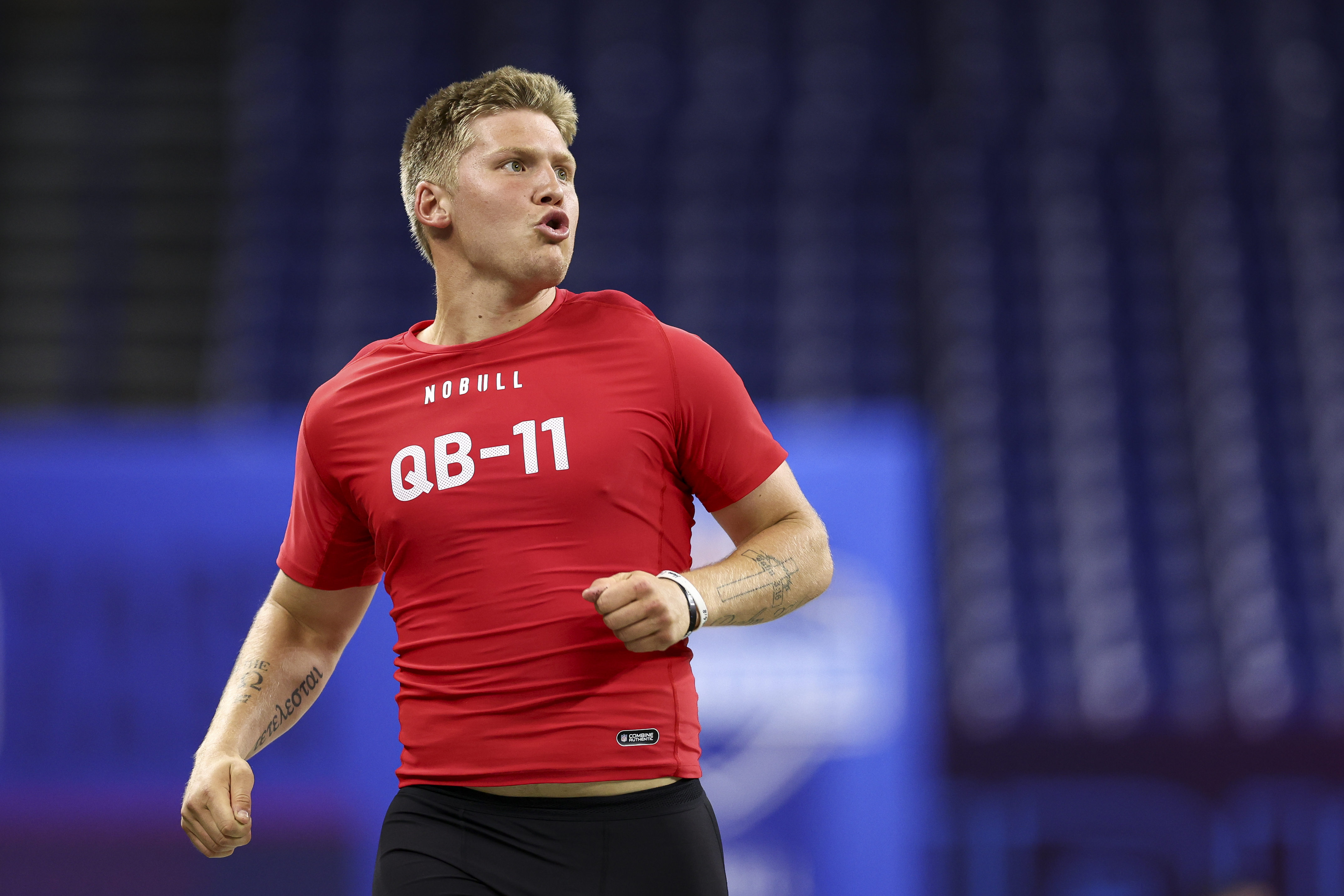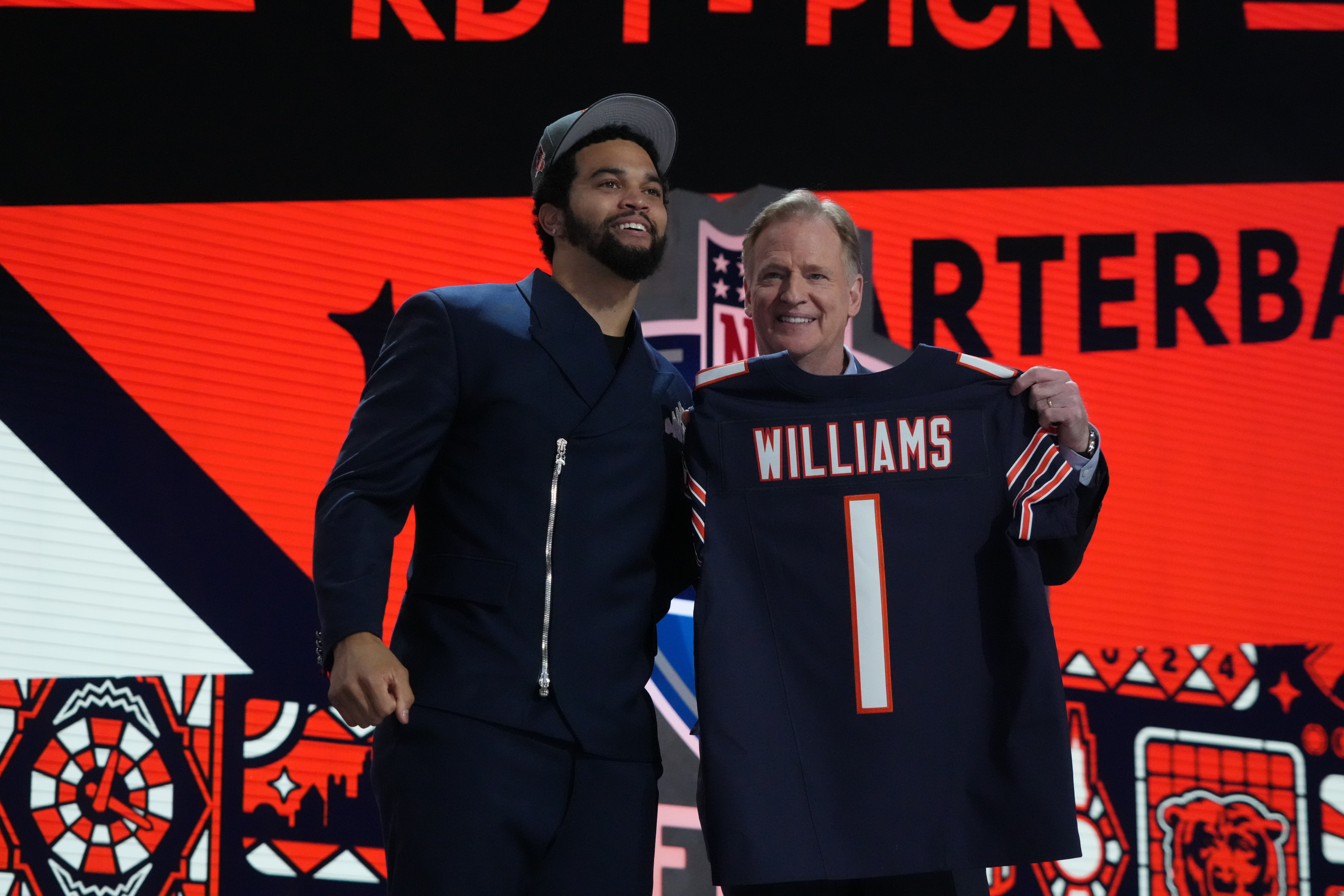The Bears had nothing to play for in Week 18 besides pride. None of their end-of-year evaluations will be swayed significantly by the 17-9 loss to the Packers. It's doubtful that anyone won a job or lost a job due to this game alone. But one point was driven home over the course of the team’s flop at Lambeau Field: the offense has a ways to go before the Bears are ready to seriously compete for the postseason.
The Bears have been a solid run team throughout the year, but they were stuffed on Sunday afternoon. Khalil Herbert, Roschon Johnson and Justin Fields combined for just 75 yards on 25 carries against the Packers that comes out to an uninspiring 3.0 YPC average on the day. That’s a far cry from the 4.5 YPC they averaged coming into the game.
With the Bears unable to move the ball on the ground, it was up to the passing attack to pick up the slack. The team could not produce through the air, however, and that was not out of character. Justin Fields completed an efficient 68.7% of his passes, but only for 148 yards and no touchdowns. The Bears entered the game tied for 27th in the NFL in terms of total passing yards. That will likely go down when all the numbers are finalized.
“Obviously that needs to improve,” said head coach Matt Eberflus.
Feeling out of the loop? We'll catch you up on the Chicago news you need to know. Sign up for the weekly Chicago Catch-Up newsletter here.
The Bears were hopeful that the addition of DJ Moore would lead to a big jump through the air. Despite Moore’s spectacular 96-catch, 1,364-yard, eight-touchdown campaign, that didn’t happen.
Cole Kmet took the next step as a pass-catching tight end with career highs in catches (73) and yards (719). He added six touchdowns, too.
Justin Fields also put together career bests in completion percentage (61.4%), passing yards (2,562) and passer rating (86.3).
Chicago Bears
It wasn’t enough. The Bears remained among the league’s worst passing teams.
So what gives? What do the Bears need to do to take that next step?
It’s not an easy answer, and the decisions the team makes about both Fields and offensive coordinator Luke Getsy will obviously make huge impacts. A few things crystallized in Week 18, however.
First, the Bears need to challenge defenses downfield more often. In Week 17, the Bears attempted five passes of 20+ yards. Fields hit on three of them and those explosives put the team in position to score. Those plays also forced the defense to respect the deep ball and opened up the middle of the field. In Week 18, the Bears only attempted one pass beyond 20 yards. Fields completed it. Nine of Fields’ 16 passes traveled fewer than 10 yards. Dinks, dunks and checkdowns are important in any offense, but when they comprise the majority of the passing attack, defenses can safely keep the ball in front of them and make tackles close to the catch point.
Too many times this season the Bears failed to threaten teams downfield. They needed to throw deep balls more consistently next year.
The lack of big passes isn’t just a playcalling issue, it’s a protection issue too. That’s the second thing that became clear on Sunday. The Packers pressured Fields early and often, and in those cases it did not allow the pass catchers to get open downfield.
Overall, the offensive line played better this season than it did last year. But several holes remain and the depth must improve, especially in the interior. Lucas Patrick had flashes of solid play at center, but he never consistently played at the level that the Bears expected when they signed him to a two-year deal in 2022. Teven Jenkins was dominant in the run game and solid in pass pro when healthy, yet he’s been unable to stay healthy for a full season in his three-year career. Since the Bears drafted Jenkins in 2021, he’s missed 21 games. Nate Davis missed much of the summer program due to a personal issue and never seemed to get on track. When he, or Jenkins was out, the backups struggled to play effectively.
Even if the Bears decide to bring back Patrick, it feels like the team would stand to gain from adding another center. Bringing in another guard to help when injuries inevitably happen next year would prevent a similar dropoff in play next year.
Finally, the Bears need more pass-catching options. As stated earlier, Moore is without a doubt the stud WR1 to lead the way. Kmet has already developed into a great two-way tight end and it doesn’t look like he’s hit his ceiling yet. But if either of those guys gets banged up, or if the defense takes one of them away, the Bears don’t have an answer. For whatever reason, Darnell Mooney never ascended in this offense. Tyler Scott is a promising deep threat, but his rookie campaign showed he’s got a ways to go before he can be counted on as a second or third option. Velus Jones appears to be a gadget player or end-around option after two seasons.
This upcoming draft is stacked with top-shelf wide receivers. The Bears have two first-round picks. Seems like a slam dunk to pick up one of them with one of those picks. It wouldn’t hurt to draft another one on day two. If not, the Bears should be active in the free agent market. Mike Evans, Calvin Ridley, Michael Pittman Jr., Odell Beckham Jr., Tee Higgins, Marquise Brown, Curtis Samuel, Kendrick Bourne, Tyler Boyd, DJ Chark, Josh Reynolds and Noah Brown could all become free agents this year, and all of them caught more passes for more receiving yards than Mooney’s 31 for 414 campaign as the Bears’ No. 2 wide receiver. Of course many of these guys will never hit the market. But some of them will, and they would help whoever is calling the plays and whoever is throwing the ball.
Hours after the Bears’ finished the regular season it’s still unclear whether or not the Bears will retain Getsy. We might not know for months what the future holds for Fields. No matter what the team decides to do with those two guys, the team has work to do in order to improve their pass game.



